The annual budget of The University of Texas at Austin is roughly $3.97 billion. | For more details, view A Primer on The University Budget for Fiscal Year 2024-25 » |
Where the money comes from
| BUDGET PERCENTAGE AND DESCRIPTION | ILLUSTRATED CHART |
|---|---|
24% State and County Support | |
13% - State EndowmentIn 1839, when Texas was still a republic, its congress set aside 221,400 acres to fund higher education. In the state’s constitution of 1876, the land allocation was increased and dedicated to The University of Texas at Austin. Today this land encompasses 2.1 million acres of West Texas which is then leased to oil and gas companies, cattle ranchers, and wind farms to generate income. A portion of the income is ultimately distributed to The University of Texas System and the Texas A&M University System, 2/3 and 1/3 respectively, including for the support and maintenance of UT Austin. The exact amount that can be distributed – known as the Available University Fund (AUF) – is set by the UT System Board of Regents. Current distributions from the AUF to UT Austin exceed $450 million per year plus an additional $25 million allocation to Dell Medical School. | 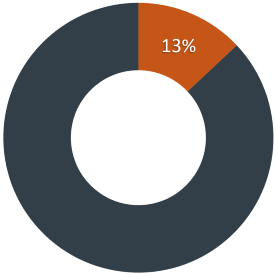
|
10% - State General RevenueEvery two years the Legislature appropriates General Revenue to the university through the state’s General Appropriations Act. Texas provides support to institutions of higher education through various funding formulas based primarily on student enrollment. Formula funding represents more than two-thirds of the university’s budgeted state General Revenue. The state also appropriates funds for certain non-formula support items operated by the university such as the McDonald Observatory in the Davis Mountains and the Marine Science Institute in Port Aransas. These funds must be requested, justified, and appropriated by the state each regular session of the Legislature. | 
|
1% - County SupportProperty owners within Travis County also contribute to the university in the form of property tax to support the creation and operation of the Dell Medical School. This tax of $0.129 per $100 valuation, approved by voters in a 2012 referendum, currently generates $35 million per year. This funding goes through the county’s hospital district, Central Health. The medical school is also funded by the state, a dedicated allocation through the AUF, and by philanthropy. | 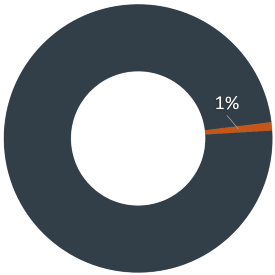
|
18% - TuitionTuition from undergraduate and graduate students at the University of Texas at Austin is more than $700 million. Less than half the cost of a student’s education is covered by tuition. All tuition rates for the university are set by The University of Texas System Board of Regents. As a result of scholarship programs such as the Texas Advance Commitment fewer than half of UT students pay full tuition. Beginning in Fall 2020, resident students from families with adjusted gross incomes up to $65,000 have their tuition fully covered and those up to $125,000 receive some form of tuition support. | 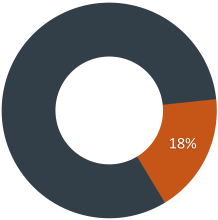
|
17% - Grants and Contracts (Sponsored Projects)The university brings in more than $600 million a year in research grants and contracts, referred to as sponsored projects. In 2017, it won the largest contract in its history when the U.S. Navy awarded the university’s Applied Research Laboratories a contract worth as much as $1.1 billion over ten years to improve national security. The University of Texas at Austin is number one in Texas and among the top 10 universities in the country for research awards financially supported by the National Science Foundation (totaling more than $115 million). | 
|
15% - Self-SupportingSelf-supporting units, also known as “Auxiliary Enterprises,” total more than $600 million while funding themselves entirely. These units therefore are not supported by any tuition dollars or public funds. These areas include Athletics, University Housing and Dining, The Erwin Center, Parking and Transportation, and Recreational Sports. Intercollegiate Athletics not only supports itself, but makes an annual contribution to support university academics. | 
|
11% - GiftsMore than $400 million from tens of thousands of alumni, friends, foundations, and corporations provide a critical margin of excellence for the university every year. The institution collects gift commitments annually including long-term pledges, but this amount reflects continuing gift distributions over time. The university uses gifts from its donors to open doors to a first-class institution, recruit top faculty, create healthier communities, and solve global problems. | 
|
8% - Enhanced Academic ExperienceBeyond the core academic and research programs, the university offers enhanced experiences through programs like Executive MBA, Study Abroad, Texas Global Programs and the UT Elementary School. These programs generate programmatic tuition and fees that offset their costs, and a portion of these funds pay for the central support provided by the institution. | 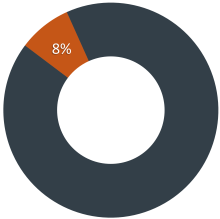
|
4% - Indirect Cost on Sponsored ProjectsA portion of externally funded research and other sponsored project funding is earmarked to cover the indirect costs of administering the projects. These costs can include utilities, custodial services, libraries, accounting and purchasing, and other general and research administration, among other costs. | 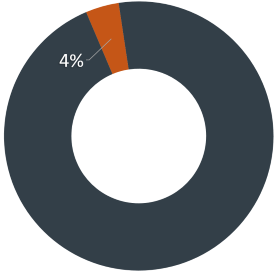
|
3% - Other FundingThe remainder of funding in The University’s budget includes things like intellectual property income, administrative fees from self-supporting units, and balances carried forward from previous fiscal years. | 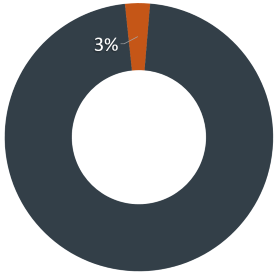
|
Where the money goes
| BUDGET PERCENTAGE AND DESCRIPTION | ILLUSTRATED CHART |
|---|---|
55% - Salaries and BenefitsAs in virtually every organization, the largest cost for the university is people. This is especially true in higher education, where everything from the quality of teaching and research to the institution’s reputation is a function of the faculty and the staff that support its students. Faculty, research, and teaching assistant instructor salaries make up approximately 39% of total Academic Core salaries. University staff salaries for this group are 36%. Benefits currently make up 25% of this slice. The sharply increasing cost of health insurance in recent years has driven the cost for benefits significantly. | 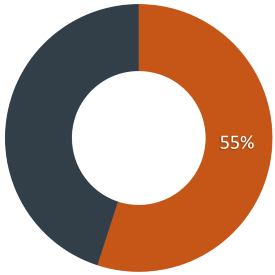
|
14% - University Operating ExpensesThe university currently comprises a main campus of more than 460 acres, featuring historic buildings dating back to the 19th century, state-of-the-art facilities, and picturesque grounds. All require maintenance, custodial services, equipment, safety and security, and upkeep. Among the hundreds of functions making up operations are administrative services provided through the President’s Office, Executive Vice President and Provost, Senior Vice President and Chief Financial Officer, Vice President for Student Affairs and Dean of Students, Vice President for Research, and Vice President for Division of Campus and Community Engagement. In addition to the main campus, the university also includes the Pickle Research Campus in North Austin, the McDonald Observatory in the Davis Mountains, the Marine Science Institute in Port Aransas, the Ladybird Johnson Wildflower Center in South Austin, and other scientific, historic and cultural treasures across the state. This part of the budget is significant and still does not begin to account for the funding needed to keep up with deferred maintenance of the university's historic properties and the basic administrative and operational needs to support its mission. | 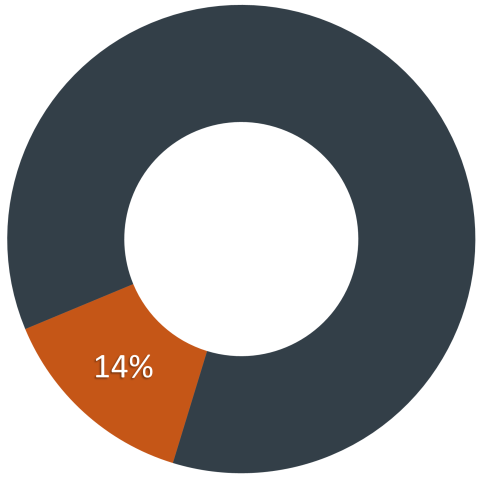
|
10% - Scholarships & Financial AidThe university awards more than $400 million a year in scholarships based on merit and need. Major categories of university-wide scholarships include the Texas Advance Commitment, Endowed Scholarships, the Presidential Scholars Program, the University Leadership Network, Undergraduate Awards, and Study Abroad Scholarships. In addition, there are numerous scholarships available through the university’s 18 colleges and schools. The Office of Financial Aid administers many scholarships as well. | 
|
9% - Academic and Research Resources & ReservesThe university invests in its academic and research priorities with seed money for starting up new programs as well as purchases of equipment. In addition, this part of the institution’s expenditures include investment in resources for the University’s libraries. | 
|
6% - Facilities – Capital, Debt Service, & UtilitiesAs the university grows to meet academic and research needs on a global scale, new facilities and renovations to existing ones become necessary. This portion of the budget also funds utilities for all of the university’s campuses. | 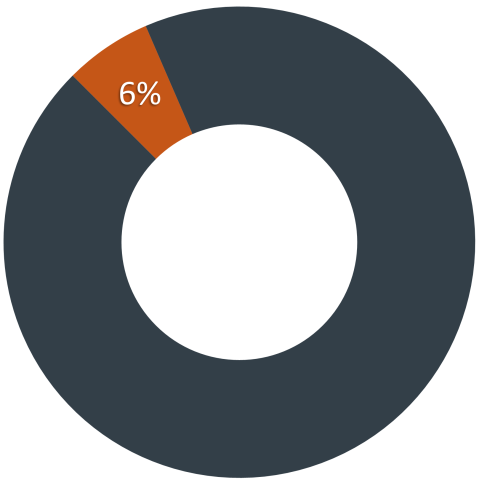
|
6% - Self-Supporting Operating ExpensesThe university’s auxiliary units, such as Athletics and University Housing and Dining Services, manage facilities that require maintenance, custodial services, equipment, safety, security, and upkeep. Funding that they contribute to the institution’s overall budget is used for these purposes. | 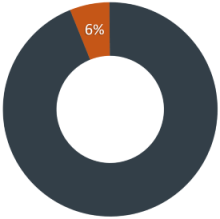
|

